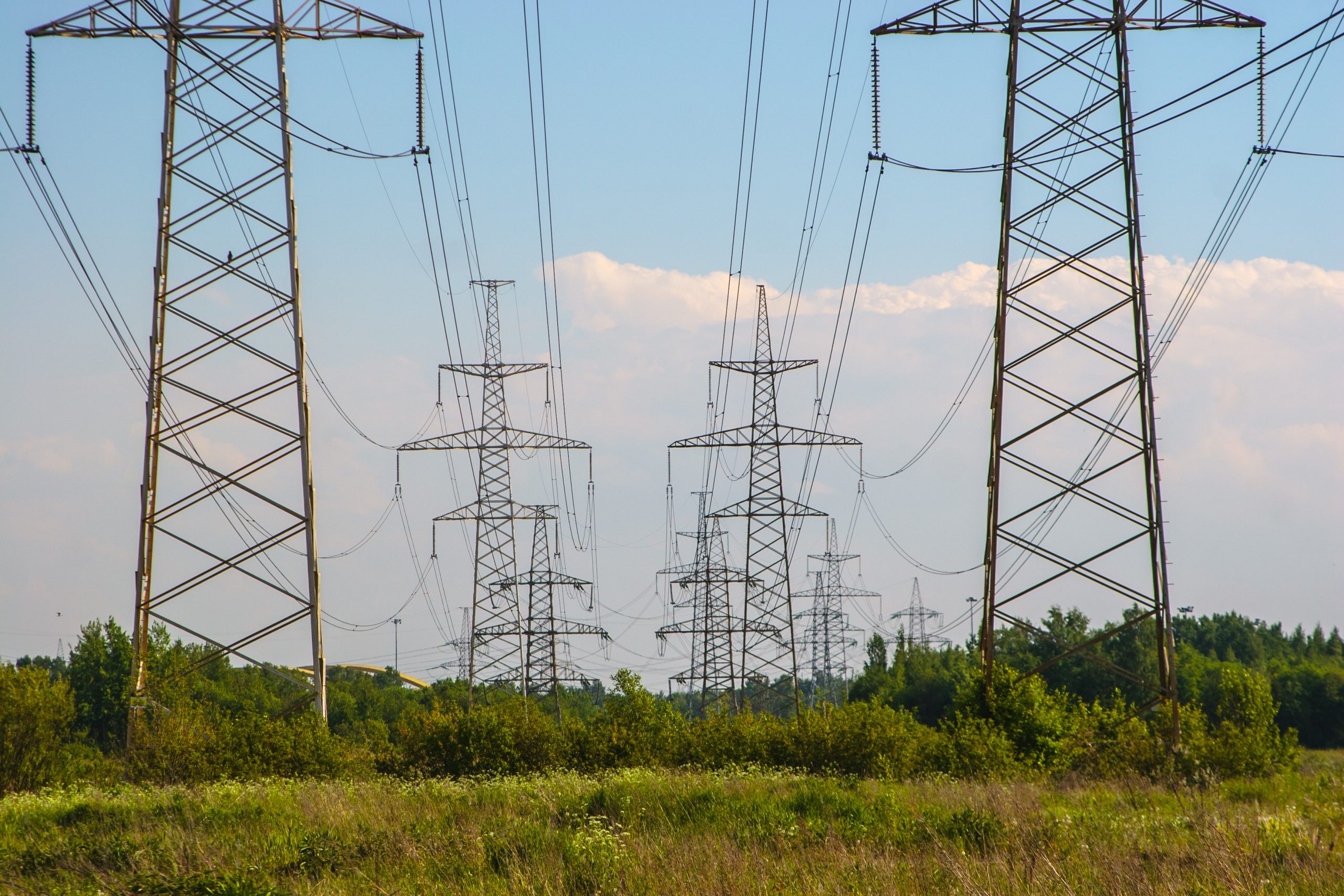
Strengthening the country's energy sovereignty is an important goal of Hungarian energy policy.Continue reading
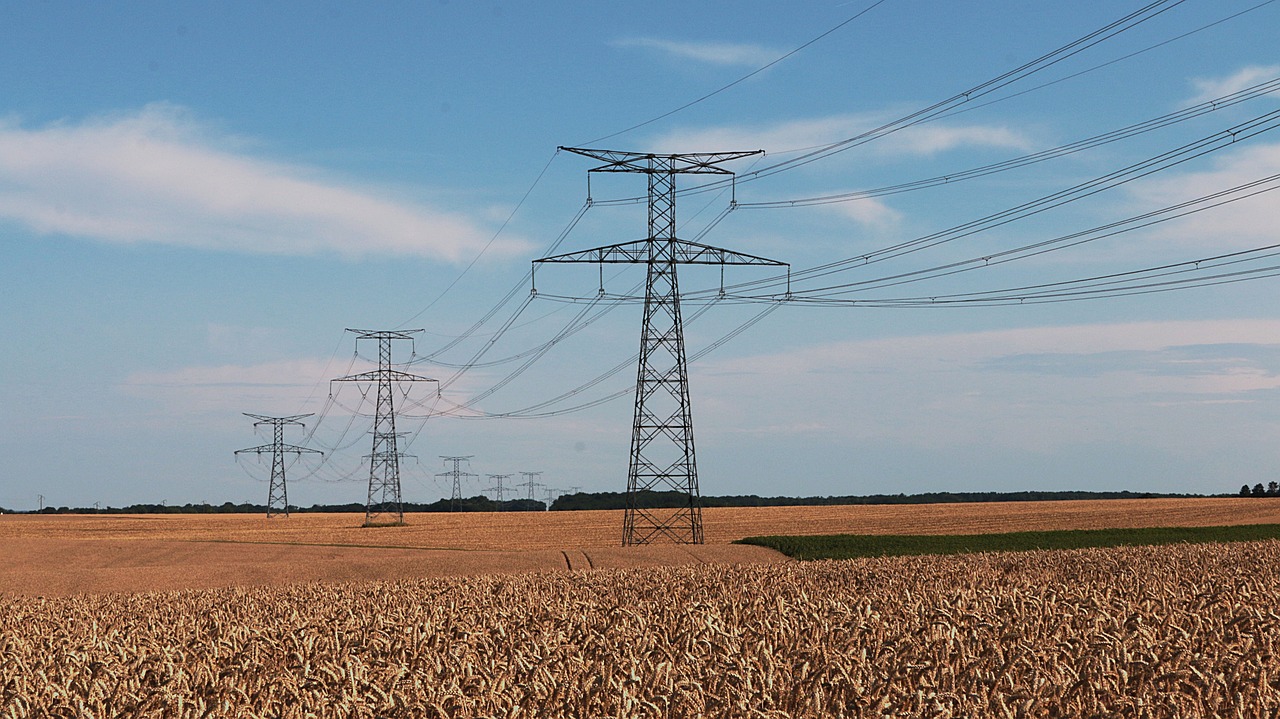
Based on Eurostat data, after a steep rise in 2022, EU electricity and gas prices were predicted to fall in the second half of 2023. Hungarian residents in the region paid the least for electricity and the least for gas in the first half of last year, reports Index.
Electricity and gas prices in the EU started to rise just before the war in Ukraine, skyrocketing in 2022, but then started to fall in the second half of 2023, according to a recent Eurostat report.
The average for household electricity in the region was EUR 28.5/100 kWh in the second half of 2023, compared to EUR 29.4/100 kWh in the first half. The cost of supplying energy, having stabilized in the first half of 2023, shows a downward trend in the second half and remained at a high level compared to the cost before the 2022 price spike, they note.
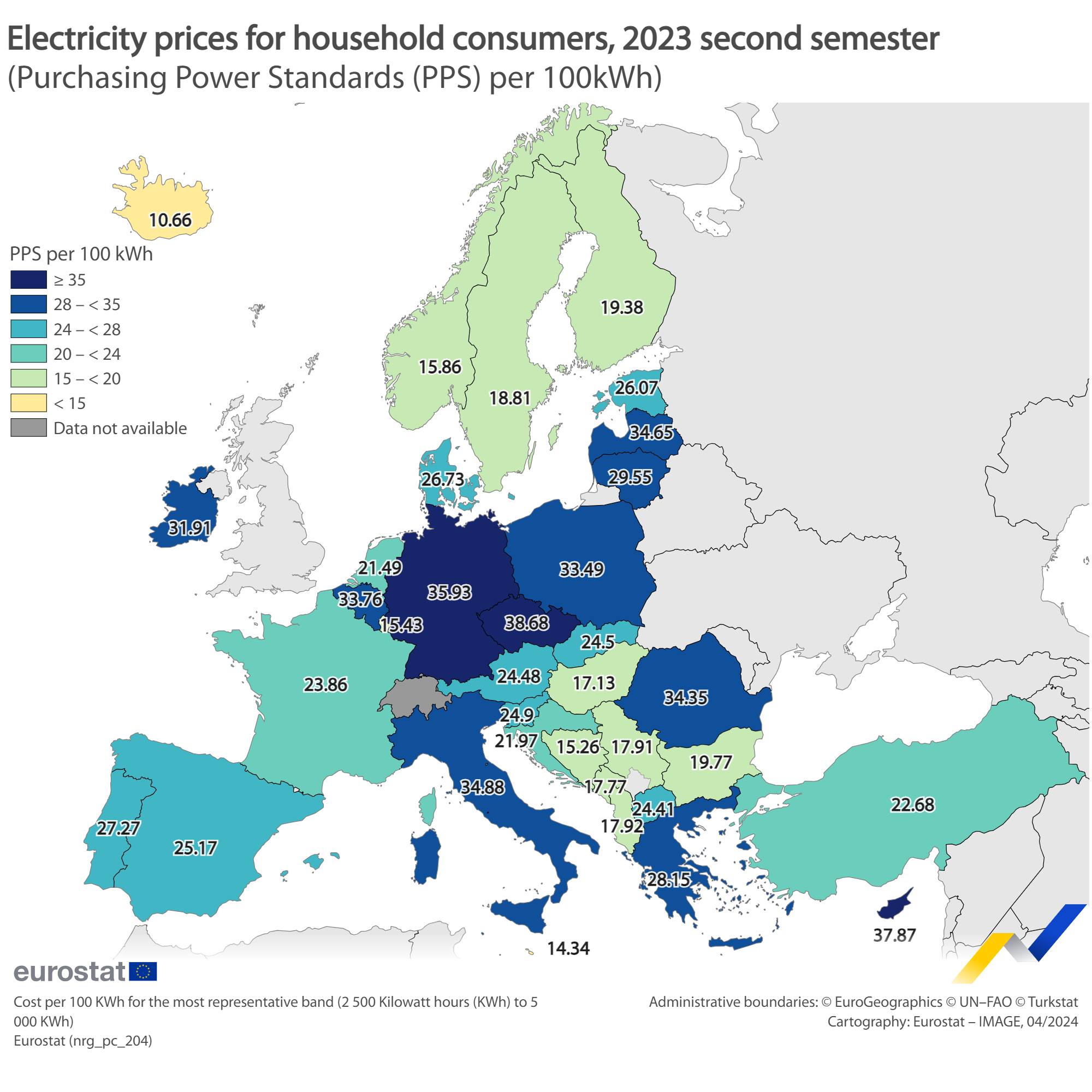
Photo via Facebook/Eurostat
The average household gas price fell to EUR 11.3/100 kWh in the second half of 2023, down from a mean of EUR 11.9/100 kWh in the previous six months. The analysis shows that this decrease is more pronounced for non-household consumers, indicating better conditions for industry.
Data showed that household electricity prices decreased in 13 EU countries and increased in the rest of the countries in the second half of 2023, compared with the second half of 2022. For non-household consumers, the prices during the second semester 2023, decreased in 17 countries, meaning a 4.6% drop. Price decreases resulted from market dynamics, but were partly offset by reducing or removing consumer alleviation measures at the national level.
Average household electricity prices in the second half of 2023 were lowest in Hungary (EUR 11.3/100 kWh),
followed by Bulgaria (EUR 11.9) and Malta (EUR 12.8), and the highest in Germany (EUR 40.2), Ireland (EUR 37.9), and Belgium (EUR 37.8), Eurostat revealed.
In national currency terms, the largest increase (86%) was recorded in the Netherlands, but significant rises were registered in the Czech Republic (83%), Poland (35%), and Germany (20%), while notable decreases were observed in Denmark (39%), Spain (30%), and Sweden (20%).
For household consumers, gas prices decreased in the second half of 2023, mainly due to lower energy costs, and to a lesser extent, taxes, which are gradually returning to pre-crisis levels after the cuts in 2022. For non-household consumers, the fall in gas prices was more pronounced in the second half of 2023.
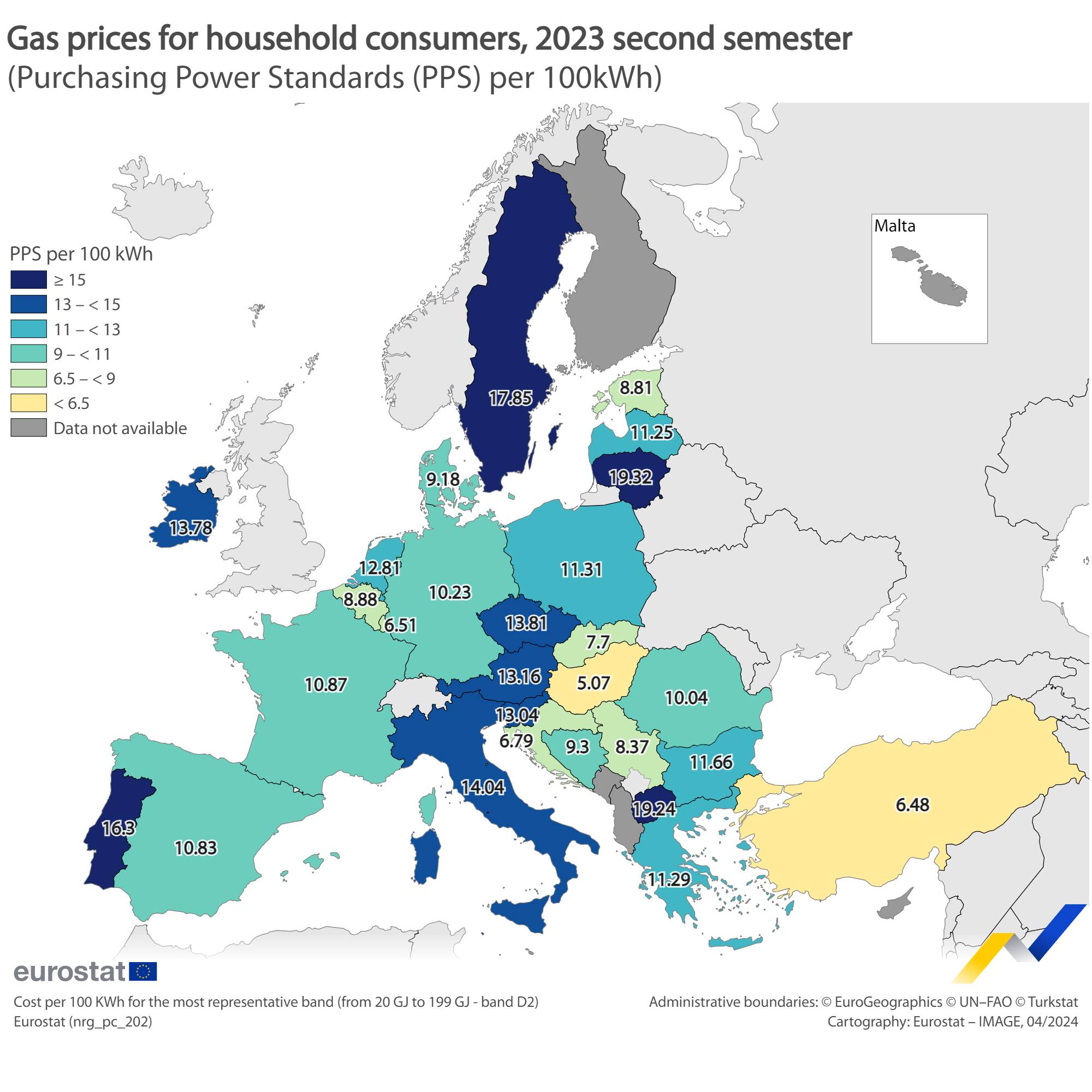
Photo via Facebook/Eurostat
Between the second half of 2022, and the second half of 2023, gas prices (in national currency) increased most in Lithuania (by 68%) and decreased most in Denmark (by 39%).
For household consumers, a total of 12 countries reported price increases, while the other 12 countries using gas reported price decreases. In the industrial sector, all but three countries reported decreases, indicating a clear downward trend in gas prices.
In Poland, prices were 32% higher, in Slovakia and Germany 22% higher, while Greece (42%), Denmark (41%), and Bulgaria (40%) saw the largest price decreases.
The average price of household gas in the first half of 2023, was lowest in Hungary (EUR 3.3/100 kWh),
followed by Croatia (EUR 4.6) and Romania (EUR 5.6). It was the highest in Sweden (EUR 20.7), Ireland (EUR 16.4), and the Netherlands (EUR 24.8), the EU’s statistical office concludes.
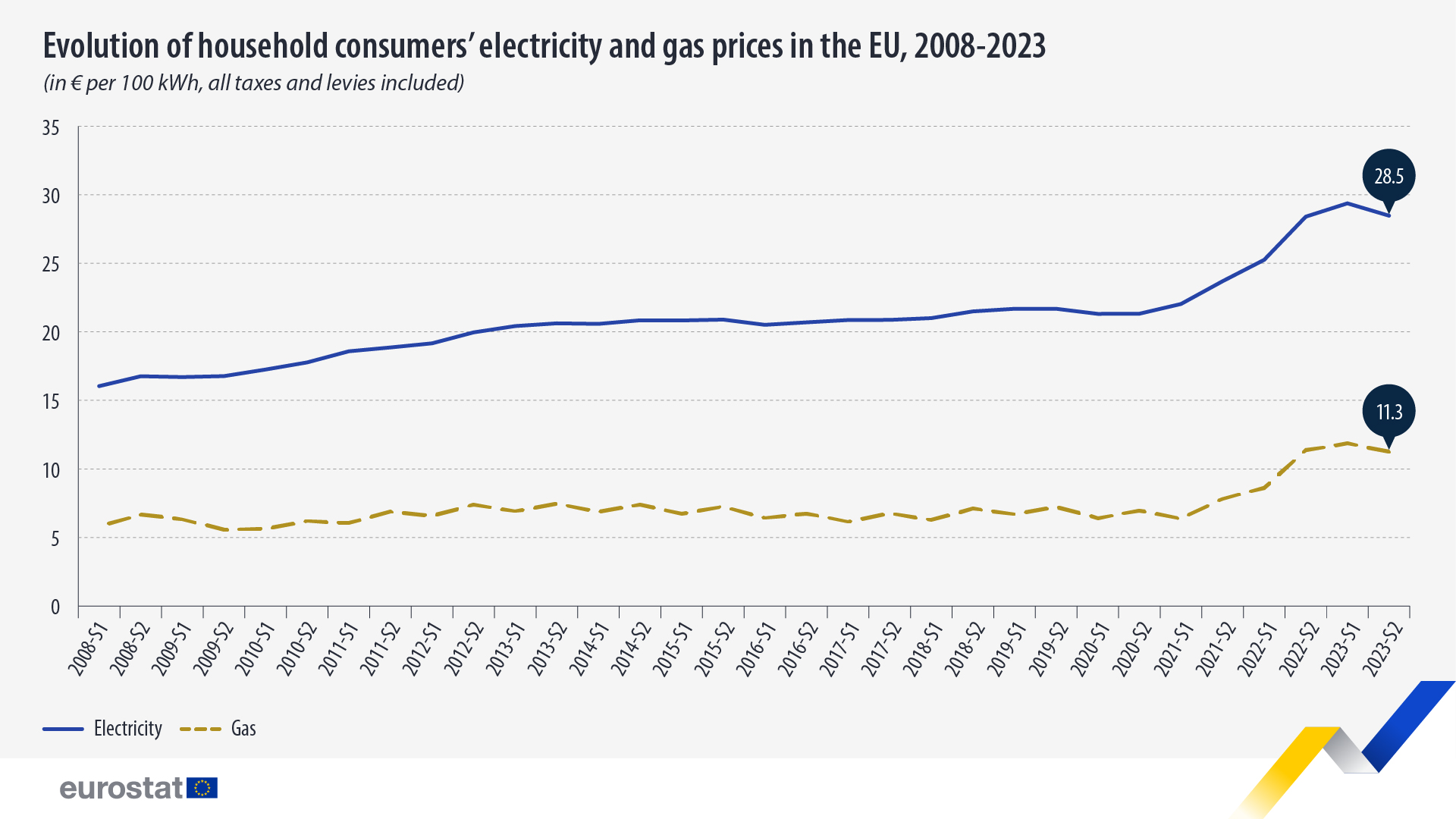
Photo via Facebook/Eurostat
Via Index, Eurostat; Featured image via Pixabay